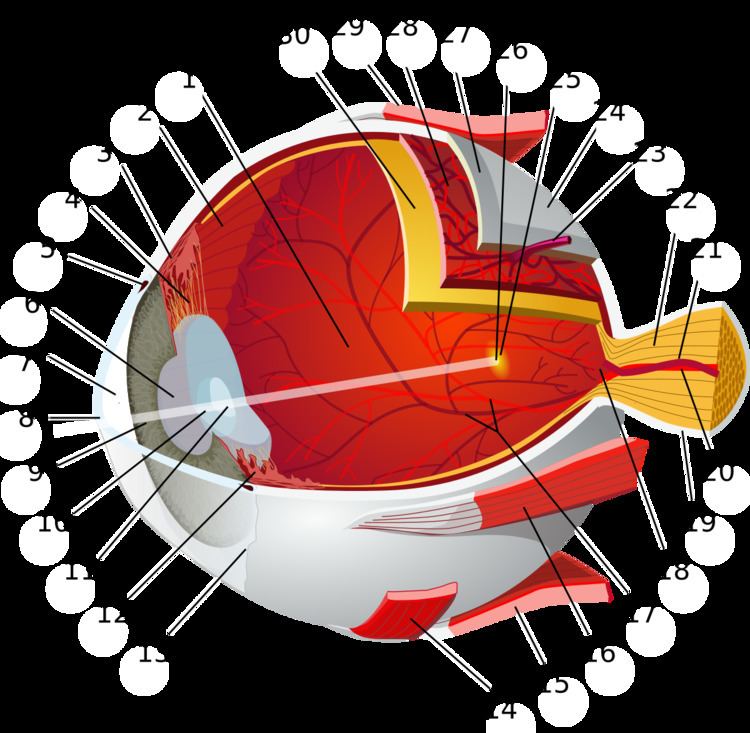MeSH A09.371.060.217.113 TA A15.2.02.019 | Dorlands
/Elsevier l_02/12476272 FMA 58273 | |
 | ||
Latin lamina limitans anterior corneae | ||
The Bowman's membrane (Bowman's layer, anterior limiting lamina, anterior elastic lamina) is a smooth, acellular, nonregenerating layer, located between the superficial epithelium and the stroma in the cornea of the eye. It is composed of strong, randomly oriented collagen fibrils in which the smooth anterior surface faces the epithelial basement membrane and the posterior surface merges with the collagen lamellae of the corneal stroma proper.
In adult humans, Bowman's membrane is 8-12 μm thick. With ageing, this layer becomes thinner. The Bowman's layer, in mammals, is found only in primates.
The function of the Bowman's membrane remains unclear and appears to have no critical function in corneal physiology. Recently, it is postulated that the layer may act as a physical barrier to protect the subepithelial nerve plexus and thereby hastens epithelial innervation and sensory recovery. Moreover, it may also serve as a barrier that prevents direct traumatic contact with the corneal stroma and hence it is highly involved in stromal wound healing and the associated restoration of anterior corneal transparency at the morphological level.
Part of the Bowman's membrane is ablated by the photorefractive keratectomy refractive surgery (commonly known as PRK). As the layer is non-generative, the section of the membrane ablated in the procedure is lost forever.
History
The Bowman's membrane is named after Sir William Bowman (1816–1892), an English physician, anatomist and ophthalmologist, who discovered this membrane.
